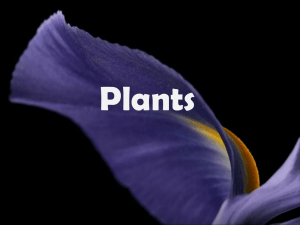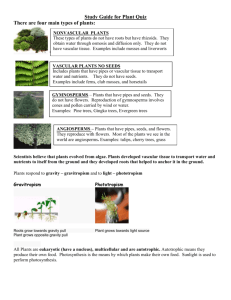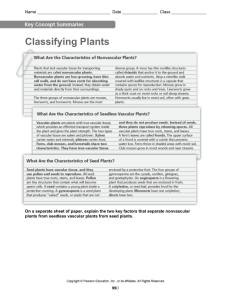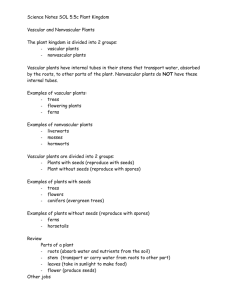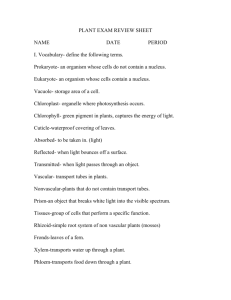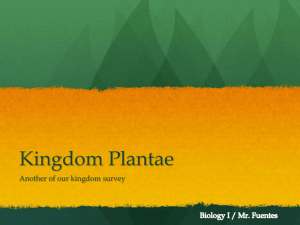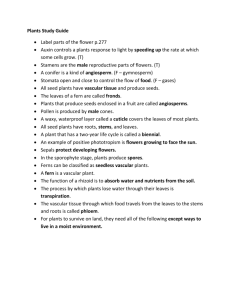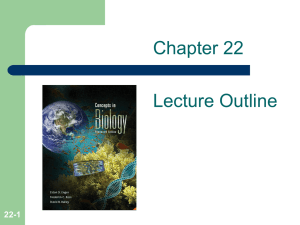Study Guide: Plants 1. What are the two large groups that plants are
advertisement
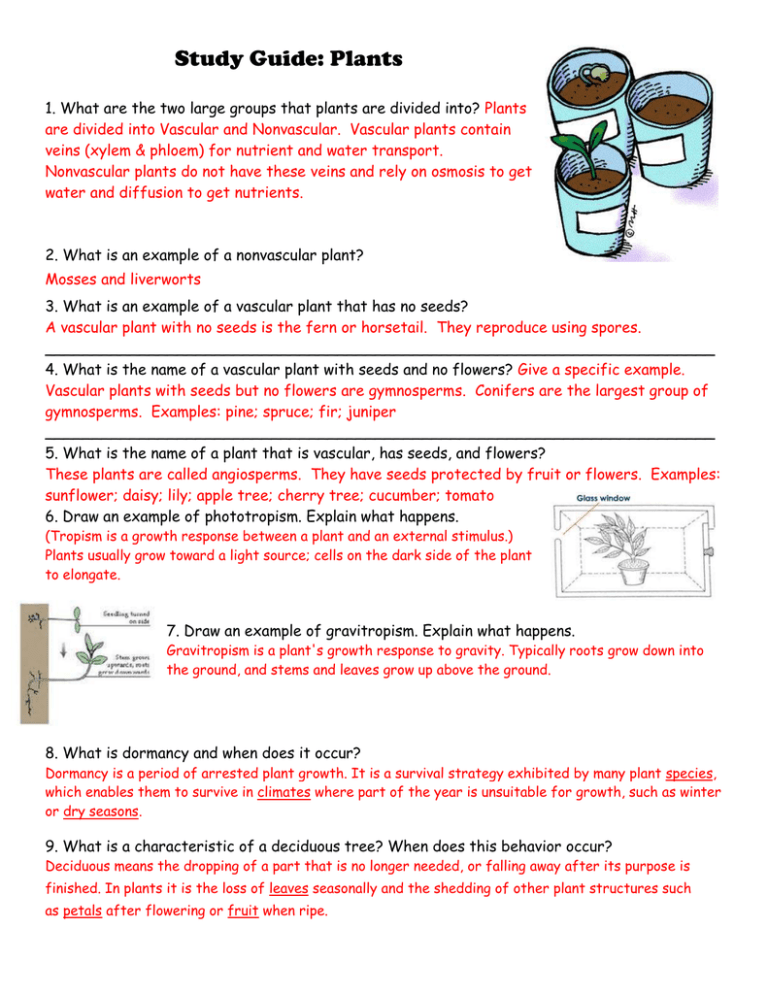
Study Guide: Plants 1. What are the two large groups that plants are divided into? Plants are divided into Vascular and Nonvascular. Vascular plants contain veins (xylem & phloem) for nutrient and water transport. Nonvascular plants do not have these veins and rely on osmosis to get water and diffusion to get nutrients. 2. What is an example of a nonvascular plant? Mosses and liverworts 3. What is an example of a vascular plant that has no seeds? A vascular plant with no seeds is the fern or horsetail. They reproduce using spores. _______________________________________________________________________ 4. What is the name of a vascular plant with seeds and no flowers? Give a specific example. Vascular plants with seeds but no flowers are gymnosperms. Conifers are the largest group of gymnosperms. Examples: pine; spruce; fir; juniper _______________________________________________________________________ 5. What is the name of a plant that is vascular, has seeds, and flowers? These plants are called angiosperms. They have seeds protected by fruit or flowers. Examples: sunflower; daisy; lily; apple tree; cherry tree; cucumber; tomato 6. Draw an example of phototropism. Explain what happens. (Tropism is a growth response between a plant and an external stimulus.) Plants usually grow toward a light source; cells on the dark side of the plant to elongate. 7. Draw an example of gravitropism. Explain what happens. Gravitropism is a plant's growth response to gravity. Typically roots grow down into the ground, and stems and leaves grow up above the ground. 8. What is dormancy and when does it occur? Dormancy is a period of arrested plant growth. It is a survival strategy exhibited by many plant species, which enables them to survive in climates where part of the year is unsuitable for growth, such as winter or dry seasons. 9. What is a characteristic of a deciduous tree? When does this behavior occur? Deciduous means the dropping of a part that is no longer needed, or falling away after its purpose is finished. In plants it is the loss of leaves seasonally and the shedding of other plant structures such as petals after flowering or fruit when ripe. 10. Design a scenario where sunlight would affect a plant: One way for plants to grow in the sunlight of the canopy of the rainforest is to start their growth there! Epiphytes (Latin for "upon the plant") grow right upon the bark of trees - not as parasites but absorbing nutrients as the bark breaks down over time. Some older trees have so many epiphytes that their branches break from the weight! 11. Design a scenario where gravity would affect a plant: No matter which direction we plant the seeds, the roots will eventually grow downward and the stem will grow upward. 12. Create a graphic organizer for the plant divisions. Be sure to include the following terms: vascular, nonvascular, seeds, seedless, flowering, phototropism, gravitropism, conifer, gymnosperm, angiosperm. Tropisms Plant Divisions Nonvascular Phototropism Gravitropism Vascular Mosses & Liverworts Seedless Seeds Reproduce by Spores Ferns & Horsetails Angiosperms Flowers/Fruits Gymnosperms Conifers Sepal Sepal: protects a maturing bud Stigma: sticky surface that attracts pollen (at the top of the pistil) Style: leads to the ovules in the ovary Pollen: contains the male gametes for fertilization Ovary: Contains the female gametes for fertilization Petal: colored structures that attract pollinators **Make sure that you also know what the STAMEN and PISTILS are??? Where are they located on the flower. COLOR THEM IN IN ON YOUR STUDY GUIDE
